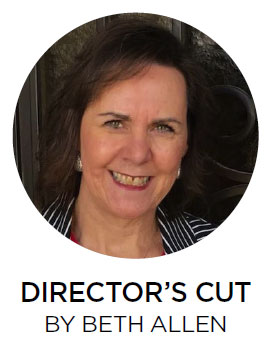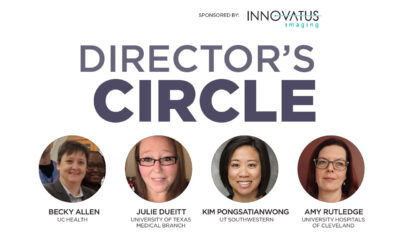 By Beth Allen
By Beth Allen
It is not unusual for jobs in health care to bring one challenge after another. You never know what to expect. It is what keeps me interested and never bored. I know that I learn something new every day because some crazy situation comes up that we have not had happen before. We may need to create a new workflow or find a different way to achieve the same results.
COVID-19 is the gift that keeps on giving. We have spent the last month working through the latest challenges caused by the pandemic. Due to an outbreak that caused a factory across the world to shut down, we were left in a predicament. Since Banner Imaging uses the GE Omnipaque product for CT and fluoroscopy, we needed to come up with a game plan that would conserve our supply but also not diminish the quality of our exams. Contrast is imperative to the diagnosis of many conditions and the status of cancer progression. How were we going to manage this situation?
Fortunately, I regularly review the AHRA forum, so we learned of this potential crisis before we were officially told. This community of medical imaging professionals is always looking out for each other. I appreciate the information that I learn there and am always shocked that people are discussing exactly what is going on in my “neighborhood.” We are all facing the same challenges and I love the opportunity to see how others are finding creative solutions.
We began to construct a contingency plan, but I was not anxious. We ordered what we could and had a decent stock on hand. We were a little ahead of the game and I was optimistic that this would be resolved quickly. I will admit that it did get a little scary for a minute.
We put together system level meetings. Although the Banner acute care facilities use another product for CT, they were also put on an allocation by the supplier to limit what they were able to order. We would not just be able to replace the Omnipaque with another product. We created a plan of action that included tier levels based on our days on hand, which was reported by each of our outpatient sites. This was essentially a guess as to how much contrast we used each day. This fluctuates based on what is scheduled. As this situation went on, we wanted to be more precise than that. We created a calculation based on historical data to determine an average volume of contrast that we used per day. We were then able to more accurately determine our-days-on hand supply.
We also needed a process to help identify which patients could safely be done without contrast, who would benefit from using a different imaging modality such as MRI or ultrasound, and who required contrast based on patient history and diagnosis. This was manual work that our amazing CT team whole-heartedly embraced. Our radiologists reviewed cases and made recommendations that ultimately were decided by the referring physician, but this took time away from reading cases and doing procedures. We heard no complaints.
This also required changes to our RIS system to ensure patients did not get a call to schedule until their information had been reviewed. Our RIS administration team got it done. Our scheduling team was brought up to speed and helped navigate the new rules. Our business development team worked to get the word out to our referring providers. The pharmacy team at the acute facilities was to repackage some larger single dose bottles into smaller doses and use them in the hospitals. This allowed us to exchange some of those for smaller aliquots of the other product with the hospitals so our supply would go further. We calculated contrast dosage based on BMI and used a saline flush to utilize every drop.
Our senior director for Banner Imaging supply chain made it her mission to procure any available contrast for us. She was able to watch for our allocations to become available and snatch them up quickly so that we would not miss out, even at 4:30 a.m.
As I write this, we are not out of the woods yet, but things are looking bright. I believe we have averted the real crisis and are working our way back to “normal” standard operating procedure. I made the joke that “Omnipaque” was my new favorite swear word because I was a little tired of the subject. I would maybe have used it when I stubbed my toe, out of frustration or pain. Not complaining, just ready for it to be over. This entire process was a lot of work, but we learned some lessons that will be valuable in the next crisis.
All in all, I was right to be optimistic from the beginning.
Why should I be anxious when we have a team of superstars. A team that works to solve issues together. We keep getting thrown curve balls, but it doesn’t matter. We will win the game with singles and doubles and once in a while, we will hit it out of the park.
We have so many complicated issues to solve. Medical imaging is unique in health care and what works for other departments doesn’t always work for us. It is nice to know that the imaging world is small, and we are in it together.
Thanks for all you do! •
Beth Allen, RT(R)(CT), CRA, is the director, clinical operations at Banner Imaging.







